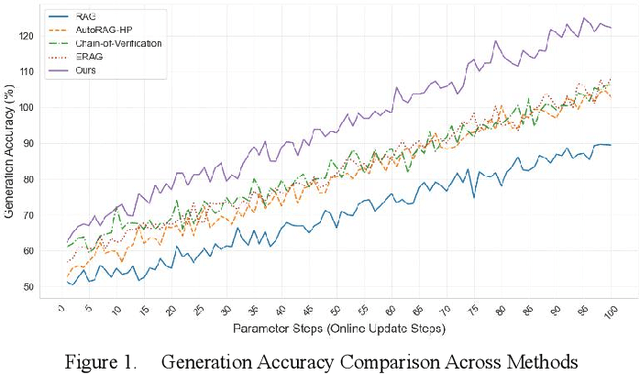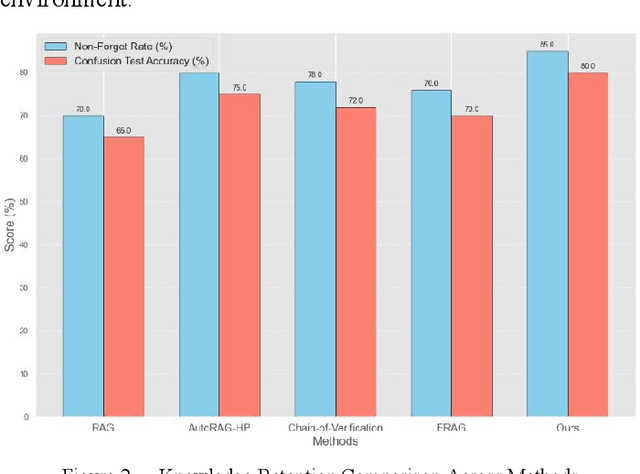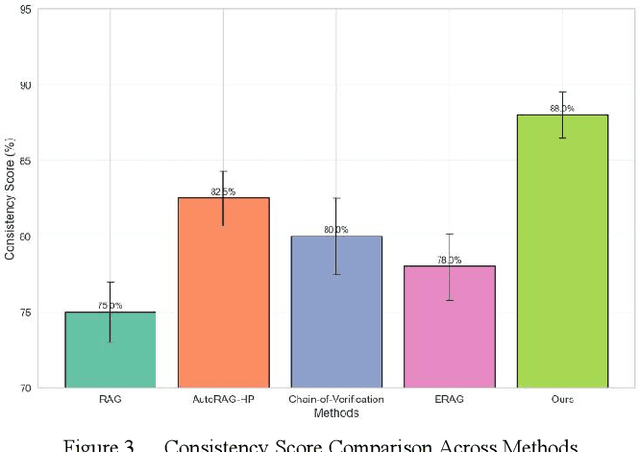Yuxiang Wang
DRWKV: Focusing on Object Edges for Low-Light Image Enhancement
Jul 24, 2025Abstract:Low-light image enhancement remains a challenging task, particularly in preserving object edge continuity and fine structural details under extreme illumination degradation. In this paper, we propose a novel model, DRWKV (Detailed Receptance Weighted Key Value), which integrates our proposed Global Edge Retinex (GER) theory, enabling effective decoupling of illumination and edge structures for enhanced edge fidelity. Secondly, we introduce Evolving WKV Attention, a spiral-scanning mechanism that captures spatial edge continuity and models irregular structures more effectively. Thirdly, we design the Bilateral Spectrum Aligner (Bi-SAB) and a tailored MS2-Loss to jointly align luminance and chrominance features, improving visual naturalness and mitigating artifacts. Extensive experiments on five LLIE benchmarks demonstrate that DRWKV achieves leading performance in PSNR, SSIM, and NIQE while maintaining low computational complexity. Furthermore, DRWKV enhances downstream performance in low-light multi-object tracking tasks, validating its generalization capabilities.
MGDFIS: Multi-scale Global-detail Feature Integration Strategy for Small Object Detection
Jun 15, 2025Abstract:Small object detection in UAV imagery is crucial for applications such as search-and-rescue, traffic monitoring, and environmental surveillance, but it is hampered by tiny object size, low signal-to-noise ratios, and limited feature extraction. Existing multi-scale fusion methods help, but add computational burden and blur fine details, making small object detection in cluttered scenes difficult. To overcome these challenges, we propose the Multi-scale Global-detail Feature Integration Strategy (MGDFIS), a unified fusion framework that tightly couples global context with local detail to boost detection performance while maintaining efficiency. MGDFIS comprises three synergistic modules: the FusionLock-TSS Attention Module, which marries token-statistics self-attention with DynamicTanh normalization to highlight spectral and spatial cues at minimal cost; the Global-detail Integration Module, which fuses multi-scale context via directional convolution and parallel attention while preserving subtle shape and texture variations; and the Dynamic Pixel Attention Module, which generates pixel-wise weighting maps to rebalance uneven foreground and background distributions and sharpen responses to true object regions. Extensive experiments on the VisDrone benchmark demonstrate that MGDFIS consistently outperforms state-of-the-art methods across diverse backbone architectures and detection frameworks, achieving superior precision and recall with low inference time. By striking an optimal balance between accuracy and resource usage, MGDFIS provides a practical solution for small-object detection on resource-constrained UAV platforms.
RAGSynth: Synthetic Data for Robust and Faithful RAG Component Optimization
May 16, 2025Abstract:RAG can enhance the performance of LLMs on knowledge-intensive tasks. Various RAG paradigms, including vanilla, planning-based, and iterative RAG, are built upon 2 cores: the retriever, which should robustly select relevant documents across complex queries, and the generator, which should faithfully synthesize responses. However, existing retrievers rely heavily on public knowledge and struggle with queries of varying logical complexity and clue completeness, while generators frequently face fidelity problems. In this work, we introduce RAGSynth, a framework that includes a data construction modeling and a corresponding synthetic data generation implementation, designed to optimize retriever robustness and generator fidelity. Additionally, we present SynthBench, a benchmark encompassing 8 domain-specific documents across 4 domains, featuring diverse query complexities, clue completeness, and fine-grained citation granularity. Leveraging RAGSynth, we generate a large-scale synthetic dataset, including single and multi-hop. Extensive experiments demonstrate that the synthetic data significantly improves the robustness of the retrievers and the fidelity of the generators. Additional evaluations confirm that RAGSynth can also generalize well across different domains. By integrating the optimized retrievers into various RAG paradigms, we consistently observe enhanced RAG system performance. We have open-sourced the implementation on https://github.com/EachSheep/RAGSynth.
Exploiting Text Semantics for Few and Zero Shot Node Classification on Text-attributed Graph
May 13, 2025



Abstract:Text-attributed graph (TAG) provides a text description for each graph node, and few- and zero-shot node classification on TAGs have many applications in fields such as academia and social networks. Existing work utilizes various graph-based augmentation techniques to train the node and text embeddings, while text-based augmentations are largely unexplored. In this paper, we propose Text Semantics Augmentation (TSA) to improve accuracy by introducing more text semantic supervision signals. Specifically, we design two augmentation techniques, i.e., positive semantics matching and negative semantics contrast, to provide more reference texts for each graph node or text description. Positive semantic matching retrieves texts with similar embeddings to match with a graph node. Negative semantic contrast adds a negative prompt to construct a text description with the opposite semantics, which is contrasted with the original node and text. We evaluate TSA on 5 datasets and compare with 13 state-of-the-art baselines. The results show that TSA consistently outperforms all baselines, and its accuracy improvements over the best-performing baseline are usually over 5%.
Guiding LLM-based Smart Contract Generation with Finite State Machine
May 13, 2025Abstract:Smart contract is a kind of self-executing code based on blockchain technology with a wide range of application scenarios, but the traditional generation method relies on manual coding and expert auditing, which has a high threshold and low efficiency. Although Large Language Models (LLMs) show great potential in programming tasks, they still face challenges in smart contract generation w.r.t. effectiveness and security. To solve these problems, we propose FSM-SCG, a smart contract generation framework based on finite state machine (FSM) and LLMs, which significantly improves the quality of the generated code by abstracting user requirements to generate FSM, guiding LLMs to generate smart contracts, and iteratively optimizing the code with the feedback of compilation and security checks. The experimental results show that FSM-SCG significantly improves the quality of smart contract generation. Compared to the best baseline, FSM-SCG improves the compilation success rate of generated smart contract code by at most 48%, and reduces the average vulnerability risk score by approximately 68%.
Towards Graph Foundation Models: A Transferability Perspective
Mar 12, 2025Abstract:In recent years, Graph Foundation Models (GFMs) have gained significant attention for their potential to generalize across diverse graph domains and tasks. Some works focus on Domain-Specific GFMs, which are designed to address a variety of tasks within a specific domain, while others aim to create General-Purpose GFMs that extend the capabilities of domain-specific models to multiple domains. Regardless of the type, transferability is crucial for applying GFMs across different domains and tasks. However, achieving strong transferability is a major challenge due to the structural, feature, and distributional variations in graph data. To date, there has been no systematic research examining and analyzing GFMs from the perspective of transferability. To bridge the gap, we present the first comprehensive taxonomy that categorizes and analyzes existing GFMs through the lens of transferability, structuring GFMs around their application scope (domain-specific vs. general-purpose) and their approaches to knowledge acquisition and transfer. We provide a structured perspective on current progress and identify potential pathways for advancing GFM generalization across diverse graph datasets and tasks. We aims to shed light on the current landscape of GFMs and inspire future research directions in GFM development.
Exploring Graph Tasks with Pure LLMs: A Comprehensive Benchmark and Investigation
Feb 26, 2025Abstract:Graph-structured data has become increasingly prevalent across various domains, raising the demand for effective models to handle graph tasks like node classification and link prediction. Traditional graph learning models like Graph Neural Networks (GNNs) have made significant strides, but their capabilities in handling graph data remain limited in certain contexts. In recent years, large language models (LLMs) have emerged as promising candidates for graph tasks, yet most studies focus primarily on performance benchmarks and fail to address their broader potential, including their ability to handle limited data, their transferability across tasks, and their robustness. In this work, we provide a comprehensive exploration of LLMs applied to graph tasks. We evaluate the performance of pure LLMs, including those without parameter optimization and those fine-tuned with instructions, across various scenarios. Our analysis goes beyond accuracy, assessing LLM ability to perform in few-shot/zero-shot settings, transfer across domains, understand graph structures, and demonstrate robustness in challenging scenarios. We conduct extensive experiments with 16 graph learning models alongside 6 LLMs (e.g., Llama3B, GPT-4o, Qwen-plus), comparing their performance on datasets like Cora, PubMed, ArXiv, and Products. Our findings show that LLMs, particularly those with instruction tuning, outperform traditional models in few-shot settings, exhibit strong domain transferability, and demonstrate excellent generalization and robustness. This work offers valuable insights into the capabilities of LLMs for graph learning, highlighting their advantages and potential for real-world applications, and paving the way for future research in this area. Codes and datasets are released in https://github.com/myflashbarry/LLM-benchmarking.
TabSD: Large Free-Form Table Question Answering with SQL-Based Table Decomposition
Feb 19, 2025Abstract:Question answering on free-form tables (TableQA) is challenging due to the absence of predefined schemas and the presence of noise in large tables. While Large Language Models (LLMs) have shown promise in TableQA, they struggle with large free-form tables and noise sensitivity. To address these challenges, we propose TabSD, a SQL-based decomposition model that enhances LLMs' ability to process large free-form tables. TabSD generates SQL queries to guide the table decomposition, remove noise, and processes sub-tables for better answer generation. Additionally, SQL Verifier refines SQL outputs to enhance decomposition accuracy. We introduce two TableQA datasets with large free-form tables, SLQA and SEQA, which consist solely of large free-form tables and will be publicly available. Experimental results on four benchmark datasets demonstrate that TABSD outperforms the best-existing baseline models by 23.07%, 2.84%, 23.24% and 9.32% in accuracy, respectively, highlighting its effectiveness in handling large and noisy free-form tables.
Research on the Online Update Method for Retrieval-Augmented Generation (RAG) Model with Incremental Learning
Jan 13, 2025


Abstract:In the contemporary context of rapid advancements in information technology and the exponential growth of data volume, language models are confronted with significant challenges in effectively navigating the dynamic and ever-evolving information landscape to update and adapt to novel knowledge in real time. In this work, an online update method is proposed, which is based on the existing Retrieval Enhanced Generation (RAG) model with multiple innovation mechanisms. Firstly, the dynamic memory is used to capture the emerging data samples, and then gradually integrate them into the core model through a tunable knowledge distillation strategy. At the same time, hierarchical indexing and multi-layer gating mechanism are introduced into the retrieval module to ensure that the retrieved content is more targeted and accurate. Finally, a multi-stage network structure is established for different types of inputs in the generation stage, and cross-attention matching and screening are carried out on the intermediate representations of each stage to ensure the effective integration and iterative update of new and old knowledge. Experimental results show that the proposed method is better than the existing mainstream comparison models in terms of knowledge retention and inference accuracy.
KnowRA: Knowledge Retrieval Augmented Method for Document-level Relation Extraction with Comprehensive Reasoning Abilities
Jan 05, 2025



Abstract:Document-level relation extraction (Doc-RE) aims to extract relations between entities across multiple sentences. Therefore, Doc-RE requires more comprehensive reasoning abilities like humans, involving complex cross-sentence interactions between entities, contexts, and external general knowledge, compared to the sentence-level RE. However, most existing Doc-RE methods focus on optimizing single reasoning ability, but lack the ability to utilize external knowledge for comprehensive reasoning on long documents. To solve these problems, a knowledge retrieval augmented method, named KnowRA, was proposed with comprehensive reasoning to autonomously determine whether to accept external knowledge to assist DocRE. Firstly, we constructed a document graph for semantic encoding and integrated the co-reference resolution model to augment the co-reference reasoning ability. Then, we expanded the document graph into a document knowledge graph by retrieving the external knowledge base for common-sense reasoning and a novel knowledge filtration method was presented to filter out irrelevant knowledge. Finally, we proposed the axis attention mechanism to build direct and indirect associations with intermediary entities for achieving cross-sentence logical reasoning. Extensive experiments conducted on two datasets verified the effectiveness of our method compared to the state-of-the-art baselines. Our code is available at https://anonymous.4open.science/r/KnowRA.
 Add to Chrome
Add to Chrome Add to Firefox
Add to Firefox Add to Edge
Add to Edge